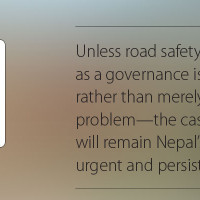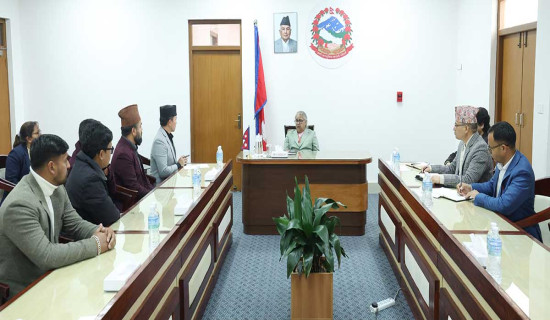- Sunday, 21 December 2025
Compensate Cattle Farmers
The government, the other day, decided to provide compensation to the farmers whose cattle were infected with the lumpy skin disease (LSD). However, the modality of compensation has not been known. It can be surmised that the most common form of government compensation has been in cash. Moreover, it is still unknown whether only the farmers whose cattle died by LSD will receive the compensation or the ones who could not earn their livelihood with infected cattle for more than a month as well.
A Cabinet meeting on Tuesday decided to authorise the Ministry of Agriculture and Livestock Development to prepare a proposal for compensation for the affected farmers. Nepal's laws mostly have many provisions of "what" and "which" damages on or by animals to compensate, and LSD is not listed in any of them. On the other hand, compensation is mostly related to damage caused by wild animals. An official at the livestock department said that the compensation in cases of domesticated animals was mostly only for bird flu as its mortality rate is often 100 per cent. As Nepal is not the only country affected by LSD, there are many mechanisms to learn from others.
Nepal can learn something from the compensation procedure proposed in Sikkim, India. Declaring LSD a state disaster, the Sikkim State government is showing activeness to provide immediate relief to the dairy farmers and those whose cattle have died of the disease. Around a month ago, Sikkim's Chief Minister Prem Singh Tamang had said that the state government would distribute 2,000 Holstein breed cows to the farmers who lost their cattle to the epidemic. Similarly, the government would construct 40 milk collection centres to boost milk production.
Rather than compensating in cash, which would be a great economic burden to the government, the farmers can be compensated with milking cows or buffaloes or even oxen if requested by farmers. Nepal government might not bring enough compensation schemes for the farmers who could not sell milk and earn their livelihood after their cattle got infected, but it needs to invest more in constructing milk collection centres and collecting data on dairy farmers.
More than 800,000 cattle were infected with LSD across the country until mid-July. Of them, 28,424 perished. Lack of effective treatment in time is attributed to the death. According to veterinarians, LSD has a low mortality, but in Nepal more animals died in a lack of effective treatment. LSD-infected cattle need be treated based on the symptoms. Meanwhile, despite a low mortality rate, in the span of around four months, many farmers' sheds have become empty. Likewise, the nation has incurred a huge loss in animal wealth.
In Nepal, the contribution of livestock to the gross domestic product (GDP) stands at around 6 per cent while that of agriculture is about 24 per cent. Similarly, since a milking cow or buffalo infected with LSD cannot give milk for more than a month, the effect on the milk industry has also been high. Lumpy skin disease, which was found in Israel in 1989, has affected cattle in Africa, Europe and the Middle East as well as South-East Asia. The first cases in South Asia were detected in 2019, and it has since spread to India, China and Nepal. In Nepal, the disease was first reported in Sundarharaicha Municipality of Morang district in June 2020.

















